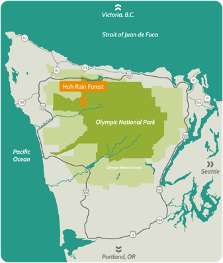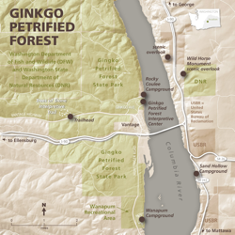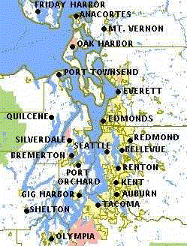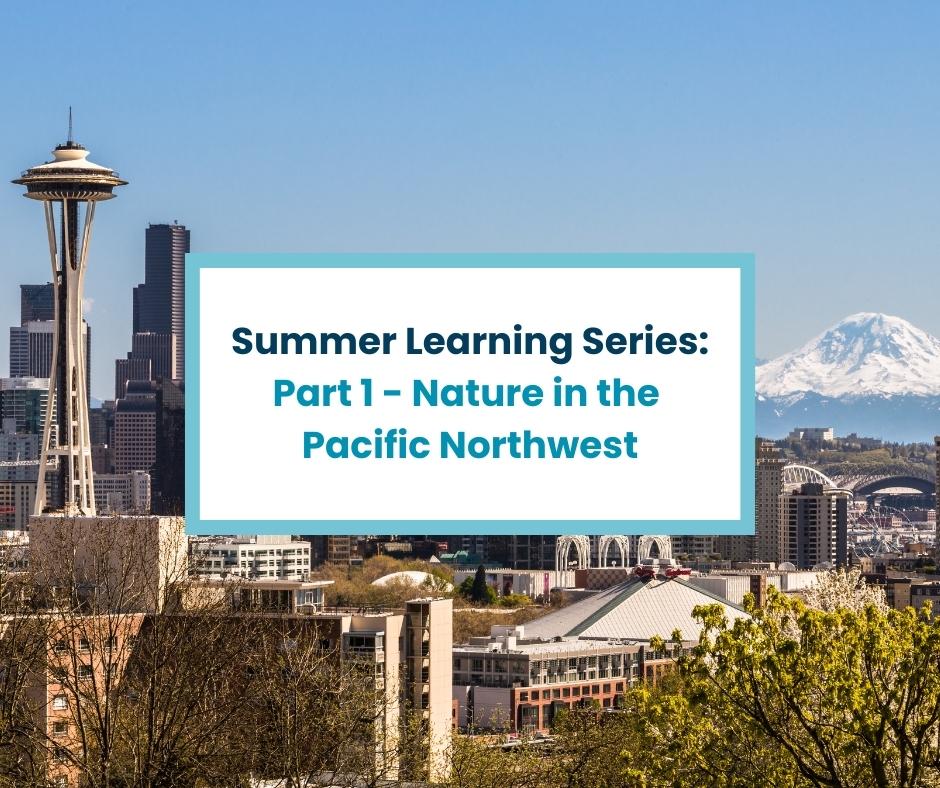Summer is officially upon us, and school is out of session for the next few months. But the learning doesn’t need to stop there! Here at the Imagine Institute we wanted to put together a small series of blogs to share some ideas of topics you can cover in your child care to keep the learning going this summer. In this Summer Learning series, we’ll share fun topics of education you can incorporate into your child care this summer and beyond.
This month, we’re looking at some of the natural marvels in Washington State. Take a look!
The Hoh Rain Forest
What makes it special?
The Hoh Rain Forest is one of the largest rainforests in the United States and receives 2.5 times as much rainfall each year compared to Seattle. As a part of the Olympic National Park, it’s protected and preserved for people to visit. The forest is home to all kinds of native animals like frogs, owls, bobcats, deer, and, famously, the Banana Slug.
Where is it?
The Hoh Rain Forest, located in Olympic National Park, is right in the top left corner of Washington State. When showing children a map of Washington State, point out the location of your child care on the map to help them place the Hoh Rain Forest in relation to where they are.

Source: olympicpeninsula.org
Fun Facts to Share
- Some trees in the Hoh Rain Forest grow over 300 feet tall and over 20 wide. That’s like stacking 12 houses on top of each other.
- There are over 1,200 native plants in the Hoh Rain Forest. Over 100 of these are types of moss.
- The word “Hoh” comes from the Quinault name for the Hoh River.
- The rain forest gets as much fog and mist as Seattle gets rain in a year.
- The Hoh Rain Forest’s environment has gone unchanged for thousands of years.
- The Banana Slug is the second largest species of land slug and can grow almost a foot long.
- Olympic National Park and the Hoh Rain Forest get over 3 million visitors every year.
- The rain forest is only one of six environments in Olympic National Park. Others include coastal, lowland, mountain, and alpine forests.
The Ginkgo Petrified Forest State Park
What makes it special?
The trees found in the Ginkgo Petrified Forest are largely from 15.5 million years ago, having since been buried in volcanic ash and turned into a fossilized forest. In its prime, the region would have been a rich, lush forest like the ones we’re familiar with in Washington, such as Snoqualmie National Forest or Wenatchee National Forest. After the volcanic eruption, the forest became trapped beneath volcanic rock as minerals fossilized the tree trunks. After the last ice age, floods washed the volcanic debris away, revealing the Ginkgo Petrified Forest. Similar forests exist elsewhere in the United States like Petrified Forest National Park in Arizona.
Where is it?
In between Yakima and Wenatchee, Ginkgo Petrified Forest State Park sits nestled on the banks of the Columbia River. The region is home to the Wanapum Recreational Area named for the Wanapum Native Americans that inhabited the area. This state park is a great topic for child cares located in Central Washington due to its notable location among major Central Washington cities.

Source: wa100.dnr.wa.gov
Fun Facts to Share
The trees found in Ginkgo Petrified Forest State Park aren’t actually trees anymore. The wood of the trees, when preserved beneath volcanic ash, is slowly replaced by minerals from the water in the ground turning the wood to stone over time.
Ginkgo trees are considered living fossils as the species existed at the same time as the dinosaurs.
Petrified wood is the official Washington State Gem.
It’s believed the Wanapum Native Americans may have used petrified wood for arrowheads and other tools.
The park is home to over 50 species of petrified trees including redwood, fir, spruce, elm, maple, and magnolia.
The Ginkgo Petrified Forest State Park is over 7,000 acres. That’s 10 times the size of Wild Waves and over twice as large as Seattle-Tacoma International Airport.
The Columbia River
What makes it special?
The Columbia River is the largest river in the Pacific Northwest. It spans over 1,000 miles and is the fourth largest river by volume in the United States. The river gives life to more than 60 smaller rivers in the region including Snake River and Beaver River and is home to between ten and 16 million salmon every year. Beyond its role in nature, the Columbia River is one of the world’s largest sources of hydroelectric power and, historically, was home to several Native American peoples throughout the Columbia River basin.
Where is it?
The mighty Columbia River flows through British Columbia in Canada, down through Central Washington, running along the Washington/Oregon border before emptying into the Pacific Ocean. It begins at Columbia Lake among the Rocky Mountains, passing through the Cascade Mountains where it forms the Columbia River Gorge. Its mouth into the ocean is responsible for heavy rains that encourage evergreen forests along the border of Washington and Oregon.

Source: kids.britannica.com
Fun Facts to Share
The drainage basin for the Columbia River is roughly the size of France and extends into seven different states.
Many species of fish in the Columbia River migrate between freshwater and the salt water of the Pacific Ocean.
There are 14 hydroelectric dams on the Columbia River. The largest is the Grand Coulee Dam.
Almost half of the Columbia River is in Canada.
People have lived along the Columbia River and its basin for more than 15,000 years.
Kitesurfers can often be found on the Columbia River due to the heavy current and high windspeeds in some locations.
The Puget Sound
What makes it special?
The Puget Sound is an inlet of the Pacific Ocean meaning it has one major and two minor connections to the sea. Major Washington cities like Seattle, Tacoma, Olympia, and Everett are all situated on the Sound. Around 15,000 years ago, a large sheet of ice covered the Puget Sound region. When this ice melted, it formed the Puget Sound in addition to prominent features of the area like Lake Washington, Lake Sammamish, and Hood Canal. The Washington State Ferries transport 24 million passengers annually, the largest ferry operation in the United States, and Puget Sound’s harbors facilitate a large volume of local and international trade.
Where is it?
While many associate the Puget Sound with Seattle, it’s a large body of water that touches several prominent cities and towns in Washington State. From our state capital, Olympia, south of Tacoma to Anacortes close to the border with Canada, the Puget Sound spans roughly 100 miles of coastline.

Source: wikipedia.org
Fun Facts to Share
The Puget Sound can be as narrow as one mile across and as wide as five miles across.
While orcas can be found in every ocean on Earth, Puget Sound has its own resident orcas known as the J, K, and L pods.
The average depth of the Puget Sound is 450 feet, but at its deepest it’s 930 feet deep.
The Puget Sound is the second largest marine system of its kind behind the Chesapeake Bay.
Native Americans used the name Whulge for the Sound coming from the meaning for ocean or salt water.
The Puget Sound has four tides per tidal day – two high tides and two low tides.
